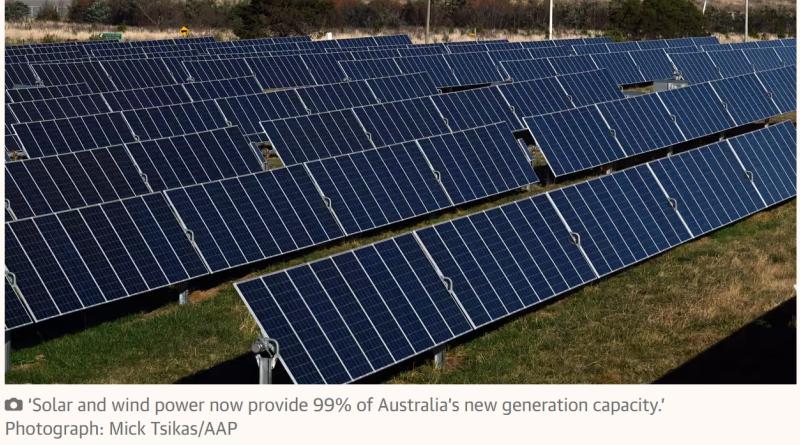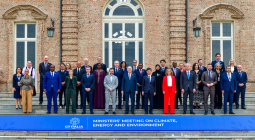Falling short of ambitious emissions targets isn’t failure – but rushing towards 2C of heating is

At their core, our climate actions are about improving the lives of people in Australia and around the world. Acting decisively now will allow us to modernise our economy, help our international partners, and avoid the worst effects of climate change.
Every year we delay rapidly reducing our emissions creates a more dangerous and less prosperous world. Last year, the Australian Academy of Technological Sciences and Engineering called for a stronger national ambition, to reach net zero emissions by 2035 rather than 2050, while making deep cuts to high-emitting sectors by 2030. The science is unequivocal and demands we decarbonise our entire economy to limit global heating to 1.5C. This level of warming may already be baked in, according to recent reports.
More ambitious climate targets will drive innovation, catalyse regulatory change, improve our workforce skills, expand critical infrastructure and spur massive investment. They will set Australia up to be a trusted global contributor. Weakening our targets can only serve to delay the transition we need to make, and would make that transition much more difficult, costly and disruptive.
Reaching net zero emissions across the entire economy is a technological and social challenge but one we must approach head-on. We can build, create, invent and distribute new technologies, tools and ways of living. Critically, getting there will require growing social licence, planning systems and political will power.
If we were to weaken our targets and limit our ambitions for the next 10, 20 or 30 years, we would slow the changes we need to make. Falling a little short of an ambitious target in 10 years’ time is not failure. Failure is leaving to ourselves, our families, our neighbours, and our friends a world rushing towards 2C of warming. That amount of warming promises huge costs, massive disruptions and serious damage to our environment and our homes. The consequences of inaction are so high that our only choice is to aim high. The pace of our actions today determines what happens to us tomorrow.
Our electricity sector is already well on the way to producing all our power with zero carbon emissions. Per capita, Australia is the world’s leader in solar and wind generation. But we’ll need more as we electrify the entire economy, which will triple demand. Solar and wind power now provide 99% of Australia’s new generation capacity. Our remaining coal plants are reaching the end of their lives and will gradually stop operations within the next two decades. There are no other mature, scalable and economical zero-emissions energy technologies suitable for Australia’s unique requirements.
Policy can help speed this up, for example, by building the storage capacity and transmission infrastructure needed to support a clean energy rollout, and support the workforces we will need to move into new industries. To get there we must invest in distribution, transmission, battery and pumped hydro storage, and grid integration. All of this has to be fast-tracked by closely engaging with communities and by streamlining regulations. We also need to work hard and fast to decarbonise our industries, our residential and commercial energy use, and our transport and agriculture sectors.
Creating a net zero economy represents an opportunity for Australia: we can become a green energy superpower, modernise and diversify our economy, and provide the critical minerals and technologies that will underpin the world’s clean energy transition. This is the rationale behind the government’s Future Made in Australia strategy but FMIA on its own won’t be sufficient to preserve our way of life. We will need new Australian innovation to realise the opportunities.
Acting on climate change has tangible benefits for Australians: our power bills will be lower, our homes easier to heat and cool, our population healthier, our cities easier to navigate, and our favourite places will be kept safe.
Transitioning from fossil fuels to clean technologies will take both dialogue and technology. We need an open and honest national conversation about the importance of preserving our climate commitments, enshrined in ambitious targets to the Paris agreement.
We need to maximise the mandates of our institutions to help us move faster, such as the Net Zero Authority, the Climate Change Authority, and the ambition of many of our state governments.
Queensland and Victoria have already massively surpassed existing targets ahead of schedule. This has informed evidence-based 2035 emissions reduction targets of 75%-80% by Victoria, 75% by Queensland and 70% by New South Wales.
As a smart, wealthy country with incredible researchers and engineers, and huge natural resources of wind, sun and critical minerals, Australia can show the world what climate ambition looks like. Hosting Cop31 in Australia in 2026 would be a powerful demonstration of this commitment on the global stage.



